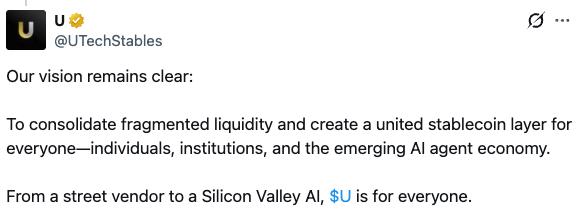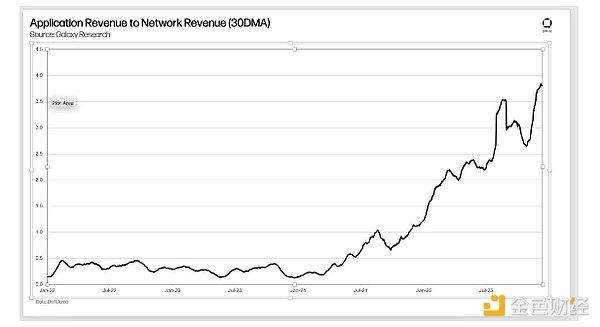US President Trump signed two executive orders on "reciprocal tariffs" last night at the White House, announcing a 10% "baseline tariff" for trade partners and higher tariffs for certain partners. White House senior officials stated that the baseline tariff rate (10%) would take effect at 4:00 AM on April 5, with reciprocal tariffs to be implemented at 4:00 AM on April 9.
US Treasury Secretary Bezos wrote, "I suggest that no country take retaliatory action. We can see if there will be different tariff floors. Trump's attitude might be to temporarily stabilize the situation. I was not involved in negotiations, and we'll see if there are any negotiations before April 9 (the effective date of reciprocal tariffs)."
The crypto market experienced a moment of both long and short pressures last night. When the conference initially announced a 10% tariff baseline, Bitcoin briefly surged to $88,000, reaching its highest point since March 25 and rising over 5%. However, after announcing additional tariffs on about 60 countries with the most unbalanced trade with the US, Bitcoin gave back most of its gains, falling below $82,500. Bitcoin's current performance suggests it has no safe-haven attributes. Meanwhile, spot gold momentarily broke through $3,160 per ounce, continuing to set new historical highs.
Related Reading: 《US Stocks Evaporate $2 Trillion in 15 Minutes, Is "Reciprocal Tariffs" the Last Straw to Crush the Bull Market?》
Not only has this pushed the global trade system into a new policy game, but it has also triggered a chain reaction in financial markets. From Bitcoin's roller coaster-like volatility to gold reaching new historical highs, the market is interpreting the deep anxiety about escalating trade tensions through price language. BlockBeats has compiled traders' perspectives on tariff policy interpretation, market outlook, and overall market analysis for readers' reference.
[The rest of the translation follows the same professional and accurate approach, maintaining the original structure and meaning while translating to English.]Similar to the logic in the quoted text, starting this week, short-term volatility should gradually amplify until a breakthrough or breakdown of the key interval, and trading difficulty will rapidly increase. The first door has been drawn as expected on Monday!
Subjectively guessing, this door is definitely not the last one...
The price is still oscillating near the middle track, without direction, completely random, and influenced by event news. Technical analysis is only suitable for small-scale, either short-term trading or not participating at all.
From a BTC liquidity perspective, last week, MSTR bought 22,000 bitcoins at an average price of 86,900, still unable to pull the price up, indicating significant selling pressure at 86-87. The needle insertion at 88,500 last night consumed this selling pressure, making it easier to go up again. The needle insertion did not break through the local previous high around 88,760, which is good - the upper liquidity was not captured, setting the stage for the next wave of increase. The next wave of pullback will have intermediate points between 93-97k, with multiple previous high-pressure levels to be worn down, entering a small incremental upward trend of two to three thousand points. The ultimate liquidity point is between 100-105k, which is suitable for gradually clearing out all cryptocurrencies.
1. We are currently in a weekly downtrend, and going long is betting on a secondary rebound within this weekly downtrend.
2. From a larger perspective, assuming the first part of the adjustment is from the highest point of 109,588 to the lowest point of 76,606, the current trend is defined as a rebound to the first drop. Due to news influence, yesterday's daily candle closed with a long upper shadow and a bearish body, which is not a good development, continuing to be suppressed within the downtrend line.

3. Currently, this rebound has two possible paths:
1) 76606➡️88765 is the first part of the rebound, 88765➡️81279 is the second part, and the rise from 81279 is the third part;
2) 76606➡️88765 is the entire rebound, and it is already constructing a downtrend continuation at this point.
4. From a small-scale perspective, it was mentioned yesterday during the rebound that the oblique trend suppression was temporarily broken, but the horizontal suppression was not yet broken. As a result, it was directly rejected at the horizontal suppression level;
1) Only by breaking around 88,700 will the rebound strengthen;
2) Only by breaking around 91,000 can the rebound be seen as more distant.

5. In terms of operation, although there was no loss, the market did not move as expected. The expectation was that news would stimulate a moderate tariff policy, directly stimulating the market to quickly break through the 90,000 level and establish a strong rebound continuation. Instead, the news showed a hard-line tariff policy, directly causing rejection at the 89,000 level and a quick pullback;
6. Prediction and speculation: As time passes, the K-line will inevitably touch the downtrend suppression line, at which point there are two possibilities:
1) Passive breakthrough, meaning the trend line has pressed down, but the price has not yet fallen, naturally breaking the downtrend line. This approach is not strong; subsequently, it will construct a longer and more stagnant continuation;
2) As the trend line moves down, the K-line is suppressed, and the price continues to decline. This approach would be more straightforward. The resistance levels above and support levels below are in the chart, please review:

7. Currently, I am again in a cash position. Since the main driving force of the market is policy-related, during this window period, I will patiently observe the reactions of various countries, markets, the Federal Reserve, and especially China and the US, to the tariff policy before deciding to place a bet. The overall large-scale bearish trend remains unchanged. The subjective expected positive factors for this rebound have been disproven, so we must wait for the game's result. I believe that other smaller countries will mostly have positive tariff responses, with China being the most uncertain, yet also having the most significant influence. At this point, I actually look forward to a "neither breaking nor establishing" approach, as going back and forth is too energy-consuming.
Welcome to join the BlockBeats official community:
Telegram Subscription Group: https://t.me/theblockbeats
Telegram Discussion Group: https://t.me/BlockBeats_App
Official Twitter Account: https://twitter.com/BlockBeatsAsia







